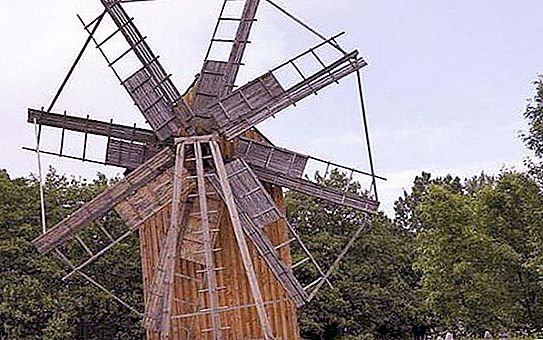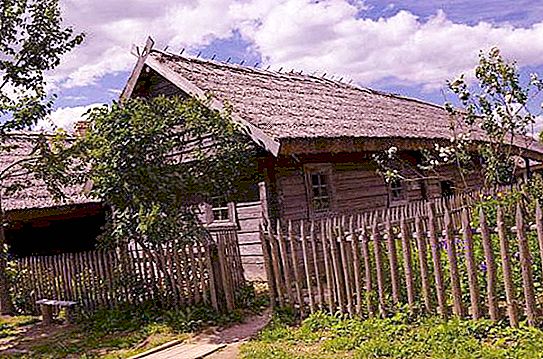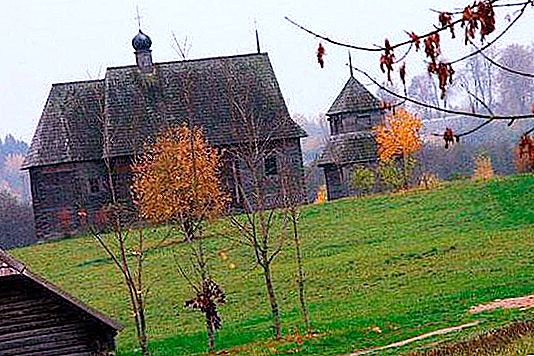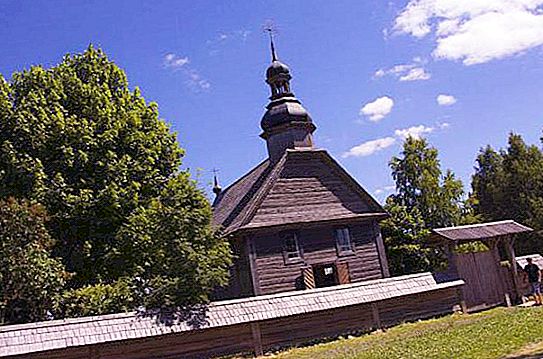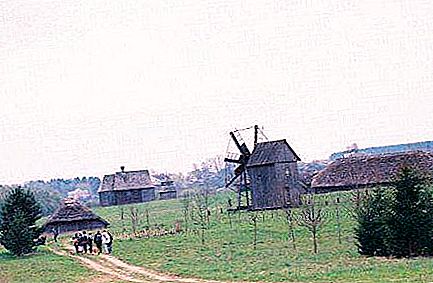In 1976, the Supreme Council of the Byelorussian SSR issued a resolution, thanks to which the Museum of Folk Architecture and Life (Strochitsa) was created. From that moment on, work began to boil, and it has not stopped to this day. The museum’s territory contains so many diverse monuments of landscape evolution, including geological history, since this blessed place is located in the middle of the Minsk Upland, almost at the highest point above sea level of all that is in the Republic.
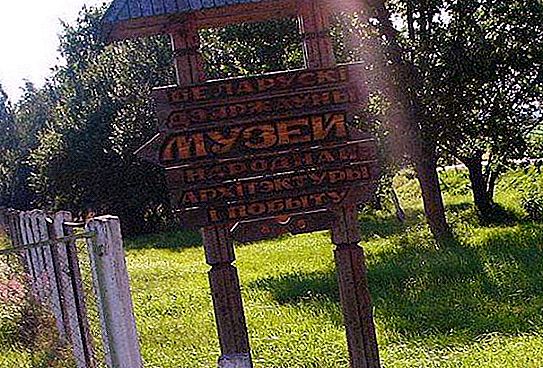
Job
In the museum complex, as already mentioned, the work has been in full swing for more than a dozen years, without stopping for a day. It includes not only expositional, but also industrial, economic, security zones, objects requiring constant engineering support, roads inside the museum zone, which stretches over great distances. And all this requires not only constant monitoring, but also improvement, replenishment with new discovered monuments.
In addition, voluminous scientific work, equipment of expeditions to the regions of the Republic is necessary in order to study the material, conduct searches, fixation and transportation of the discovered monuments of household items, as well as examples of ancient architecture, crafts and crafts. And very often there are monuments of great importance, which are lovingly adorned by the Museum of Folk Architecture and Life. Strochitsy is not the only location of the complex. Just an old village located in this territory gave the museum a name.
Territory
The Ministry of Culture of the Republic of Belarus still treasures the State Museum, which for forty years has been demonstrating the traditional monuments of wooden architecture that the Belarusian people created in the seventeenth, eighteenth and nineteenth centuries. Especially a lot of care requires the preservation of the natural environment, since these monuments are in the open.
The total territory where the Museum of Folk Architecture and Life (Strochitsy) is located is two hundred and twenty hectares. It is located very close to the capital (four kilometers), where the Menka and Ptich rivers flow. The entire area of the museum is divided into several sectors: "Lake District", "Dnieper", "Central Belarus" and others. Each of them presents a holistic picture typical of the historical development period indicated above, with all its characteristic regional features.
Monuments
Now thirty-five monuments of folk architecture created by the Belarusian people for the period from the end of the seventeenth to the beginning of the twentieth century are presented at the museum's exposition. These are religious buildings (belfries, churches, chapels), public buildings (public school, public barn), industrial buildings (mills, forge) and large complexes of manor architecture. An ordinary house with outbuildings can tell a lot about the peasant life of this period.
Everywhere painstakingly restored traditional interiors, great attention was paid to small architectural forms that give a complete look to each exhibition sector: wells, fences of various types and green spaces. The Museum of Folk Architecture and Life (Strochitsa) has the status of the custodian of historical and cultural values of the second category, which are included in the corresponding list of the republican level by the state. In total, the museum’s collections contain more than twenty three thousand storage units.
Whole country
The Minsk region, which donated part of its territory (right behind the Koltsovo automobile market) to the museum, greatly benefited from this step. Expositions are visited by thousands of tourists who want to get acquainted with the history of Belarus. Here are collected almost all examples of folk wooden architecture from each region of the Republic. Churches, mills, barns, huts, a tavern - everything is authentic, the present was found at different times and carefully transported here from all over the country.
Collected exhibits do not carry any stylistic discord, since they are connected in one place thoughtfully, resourcefully and expediently. Skansens (open-air museums) are a fairly common phenomenon in the world, but in Belarus there is one that carries the image of the whole country. Visitors plunge headlong into this expanse, through the Belarusian folk architecture, learning the boundless depths of the soul of the creator people.
This idea, which was realized by the creators of the museum, turned out to be fertile, and for sure it will continue to connect generations from the cradle of folk art up to unnamed times. Minsk district welcomes guests: it conveniently suits everyone, deliciously feeds, entertains. And all this is quite inexpensive.
Exhibits
Some of the thirty-five monuments that the museum contains are from time to time under restoration, and the Ministry of Culture of the Republic of Belarus is actively involved in solving such problems. The main thing is that at any time, the life of the Belarusian village is presented in an exhaustive way, tourists examine the exhibits, they have a holistic impression of ancient times. This is facilitated by the diversity of the presented monuments: household items in the tavern and the Uniate church, in the school and the battle theater, closed peasant yards and the old mill - everywhere life was transferred fully and reliably.
Narrow rural streets seem to lead the visitor to the gilded domes of the Pokrovskaya church of the eighteenth century, which seem to tend to pierce the very heavens. This temple is active, attractive for parishioners, and for visitors with its beauty and charter.
Then, tourists will definitely go through museum peasant yards, go ashore, where they will be met by an old windmill brought from Khotimsky district, and then they will visit another magnificent temple - the Transfiguration Church. The Belarusian State Museum of Folk Architecture and Life offers modern exhibitions: "Belarusian Flax", "Beekeeping of Belarus", "Vehicles", "Zabrodstkie Tackle" and others.
New zones
Skansens better than other museum forms show the history and everyday features of each of its segments in the most natural conditions. At first, it seems to visitors that the village in which they found themselves is quite residential, just the owners of these houses are now somewhere far away in the field, and later in the evening they will make a speech on these streets, creak the well gate, and pets will vote. Literally all objects meet tourists as if they are waiting for the owners to return.
The historical and ethnographic sectors in their relief are very close to the natural conditions of the locality they represent. Lakeside, Western Polesie and Eastern, Ponemanie somehow found almost a mirror image of landscapes on two hundred and twenty hectares of the capital's suburbs.
There is also a nature conservation landscape zone (along the floodplain of the Ptich River) on the territory of the museum. All the buildings are genuine, brought here from different parts of the Republic: they were carefully dismantled on the spot, then they were carefully transported and, under the guidance of specialists, they were again mounted on the museum.
Strochitsy
Minsk is the most beautiful European city in which there is something for tourists to see. Nevertheless, the vast majority of travelers strive to touch the original historical reality, walk along the rural streets of the eighteenth century, visit wooden churches, Belarusian huts, see how the mill works, sit at a school desk two centuries ago. In a word, the village of Strochitsy, not far from the capital, attracts them with distant antiquity.
Most of all, people are attracted by unique and well-preserved or talentedly restored household items that came from the hands of craftsmen who knew their craft well. Furniture, utensils, household equipment is still quite capable of serving its intended purpose, and home decoration, shoes, clothes, jewelry impress with a whimsical pattern of embroideries, stitches, hemstitches, home-made lace.
Ninth century
The hillfort on the Menka River is a unique archaeological monument that arose BC, from where the city of Minsk appeared many centuries later. Here, on the museum territory, several burials in the mounds, which scientists date around the ninth century, have been preserved.
The Ethnographic Museum constantly holds lectures, organizes folk festivals, colorful festivals, and national handicraft workshops. These days, every tourist can try himself in the role of a Belarusian peasant, spider, artisan. It also serves delicious national cuisine. Near the fortification, history and culture combine, museum life is enriched, and grateful tourists write reviews.
Tours
Excursions that cover people of any age are very popular: "Folk weaving", "Folk architecture", "Interior of outbuildings", "On clothes they meet", "Magic kufar", "Spikelet" and many others. Exhibitions also work, especially Windmills. The Moscow-Brest highway, known from the tenth century under other names, connects Strochitsy with museums in Priluki, Zaslavl, Ratomka.
Researchers from the cultural-educational, scientific-stock, scientific-and-exposition departments willingly serve those who wish, leaving them with memories of this wonderful excursion for life. During excursions, interactive elements are widely used that are related to the nature and theme of the event, in many scenarios there are reconstructions of the Belarusian folk rites.

